Pharmacology > Research Paper > Pharm 1 Final Exam Study Guide (All)
Pharm 1 Final Exam Study Guide
Document Content and Description Below
Pharm 1 Final Exam Study Guide 1. DigoxinBook Information- Diuretics are the first-line drug treatment for reducing fluid volume. They are frequently prescribed with digoxin or other agents. �... �� Aloe may increase the risk of digitalis toxicity. It increases potassium loss, which increases the effect of digoxin. Ginseng may falsely elevate digoxin levels. which increases the effect of digoxin. It may cause digitalis toxicity. Pharmacokinetics The absorption rate of digoxin in oral tablet form is 70%. The rate is 90% in liquid and capsule form. The protein-binding power for digoxin is 30%. The half-life is 30 to 40 hours. Because of its long half-life, drug accumulation can occur. Side effects should be closely monitored to detect digitalis toxicity. Patients should be made aware of side effects that need to be reported to the health care provider. Serum digoxin levels are most commonly drawn when actual digitoxicity is suspected. This allows the health care provider to ascertain the extent of such toxicity and to confirm elimination of the drug after it is stopped or decreased in dosage (see the Digitalis [Digoxin] Toxicity section later in this chapter). Thirty percent of digoxin is metabolized by the liver, and 50% to 70% is excreted by the kidneys mostly unchanged. Kidney dysfunction can affect the excretion of digoxin. Thyroid dysfunction can alter the metabolism of cardiac glycosides. For patients with hypothyroidism, the dose of digoxin should be decreased; in hyperthyroidism, the dose may need to be increased. Pharmacodynamics In patients with a failing heart, cardiac glycosides increase myocardial contraction, which increases cardiac output and improves circulation and tissue perfusion. Because these drugs decrease conduction through the AV node, the heart rate decreases. The onset and peak actions of oral and intravenous (IV) digoxin vary. The therapeutic serum level is 0.8 to 2.0 ng/mL for digoxin. To treat HF, the lower serum therapeutic levels should be obtained, and for atrial fibrillation, the higher therapeutic serum levels are required. Digoxin can be administered orally or IV. Table 42-2 lists the digitalis preparations and their dosages, uses, and considerations. Digitalis (Digoxin) Toxicity Overdose or accumulation of digoxin causes digitalis toxicity. Signs and symptoms include anorexia, diarrhea, nausea and vomiting, bradycardia (pulse rate below 60 beats/min),premature ventricular contractions, cardiac dysrhythmias, headaches, malaise, blurred vision, visual illusions (white, green, yellow halos around objects), confusion, and delirium. Older adults are more prone to toxicity. Cardiotoxicity is a serious adverse reaction to digoxin; ventricular dysrhythmias result. Three cardiac-altered functions can contribute to digoxin-induced ventricular dysrhythmias: (1) suppression of AV conduction, (2) increased automaticity, and (3) a decreased refractory period in ventricular muscle. The antidysrhythmics phenytoin and lidocaine are effective in treating digoxin-induced ventricular dysrhythmias. Lidocaine should be limited to short-term treatment. Antidote for Cardiac/Digitalis Glycosides It is essential that patients taking digoxin, diuretics, and potassium supplements for HF do not miss any doses of their medication. Patient should be fully aware of adverse effects and readily report them to the health care provider. Patient Teaching: Teach patient how to check pulse rate before taking digoxin and to notify health care provider if pulse rate is <60 beats/min or irregular. Nursing Interventions: Monitor serum digoxin level (normal therapeutic drug range is 0.8 to 2 ng/mL). A serum digoxin level greater than 2 ng/mL is indicative of digitalis toxicity. Monitor serum digoxin level (normal therapeutic drug range is 0.8 to 2 ng/mL). A serum digoxin level greater than 2 ng/mL is indicative of digitalis toxicity. The patient is receiving digoxin for treatment of heart failure. Which finding would suggest to the nurse that heart failure is improving? 2.The patient's serum digoxin level is 3.0 ng/mL. What does the nurse know about this serum digoxin level? 2. LasixQuestions: What should the nurse do when a patient is taking furosemide (Lasix)? A patient has heart failure, and a high dose of furosemide (Lasix) is ordered. What suggests a favorable response to Lasix? 3. HydrochlorothiazideFor the patient taking a diuretic, a combination such as triamterene and hydrochlorothiazide may be prescribed. The nurse realizes that this combination is ordered for which purpose? A patient is taking hydrochlorothiazide (HCTZ) 50 mg/day and digoxin (Lanoxin) 0.25 mg/day. The nurse plans to monitor the patient for which potential electrolyte imbalance? 2.The nurse knows that which statement is correct regarding nursing care of a patient receiving hydrochlorothiazide (HCTZ)? (Select all that apply.) The nurse knows that which diuretic is most frequently combined with an antihypertensive drug? 4. BNP Levels- 5. Side effect of nitrates- Headaches are one of the most common side effects of nitroglycerin, but they may become less frequent with continued use. Otherwise acetaminophen may provide some relief. . In addition, reflex tachycardia may occur if the nitrate is given too rapidly. The heart rate increases greatly because of overcompensation of the cardiovascular system. 6. Variant angina- Treatment- Calcium-Channel blockers. CCB’s relax coronary artery spasm (variant angina).7. Milrinone (Primacor)- Phosphodiesterase Inhibitor- Milrinone lactate. Increases stroke colume and cardiac output and promotes vasodilation. Administered IV for no longer than 48-72 hours. Used for short-term treatment of HF, may be given before a heart transplant. Heart rate and Blood pressure should be closely monitored. 8. Mannitol (Osmitrol)- Mannitol is a potent osmotic potassium-wasting diuretic frequently used in emergency situations such as ICP and IOP. In addition, mannitol can be used with cisplatin and carboplatin in cancer chemotherapy to induce a frank diuresis and decreased side effects of treatment. Mannitol is the most frequently prescribed osmotic diuretic, followed by urea. Diuresis occurs within 1 to 3 hours after IV administration. Table 43-4 describes Mannitol. SE: The side effects and adverse reactions of mannitol include fluid and electrolyte imbalance, pulmonary edema from rapid shift of fluids, nausea, vomiting, tachycardia from rapid fluid loss, and acidosis. Crystallization of mannitol in the vial may occur when the drug is exposed to a low temperature. The vial should be warmed to dissolve the crystals. The mannitol solution should not be used for IV infusion if crystals are present and have not been dissolved. Contraindications: Mannitol must be given with extreme caution to patients who have heart disease and HF. It should be immediately discontinued if the patient develops HF or renal failure. What does the nurse know to be correct concerning the use of mannitol (Osmitrol) in patients? 9. HTN, Renin in African Americans- African Americans are more likely to develop hypertension at an earlier age than white Americans. They also have a higher mortality rate from hypertension than the white population. The use of betaadrenergic blockers (beta blockers) and angiotensin-converting enzyme (ACE) [Show More]
Last updated: 1 year ago
Preview 1 out of 6 pages
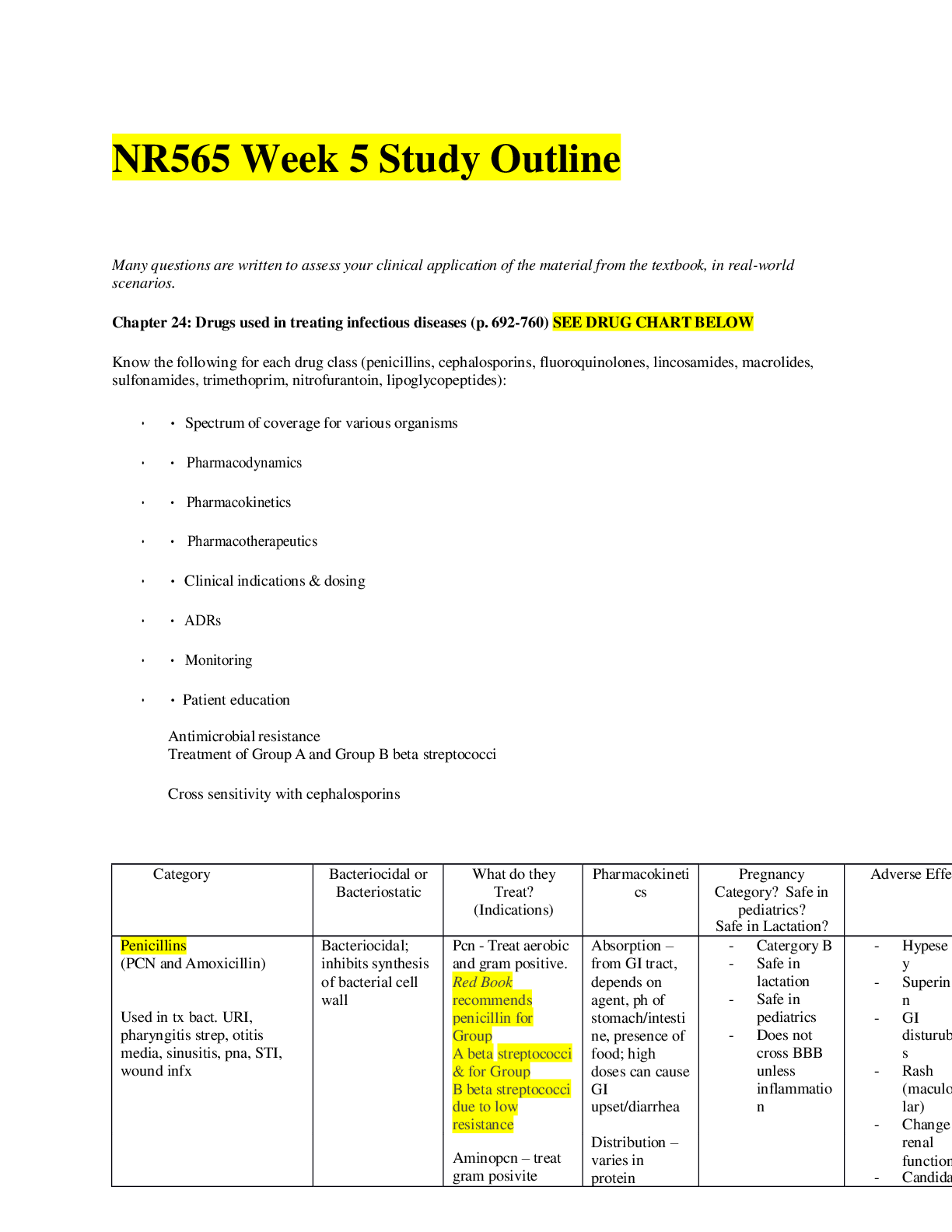
Reviews( 0 )
Document information
Connected school, study & course
About the document
Uploaded On
Feb 11, 2021
Number of pages
6
Written in
Additional information
This document has been written for:
Uploaded
Feb 11, 2021
Downloads
0
Views
33

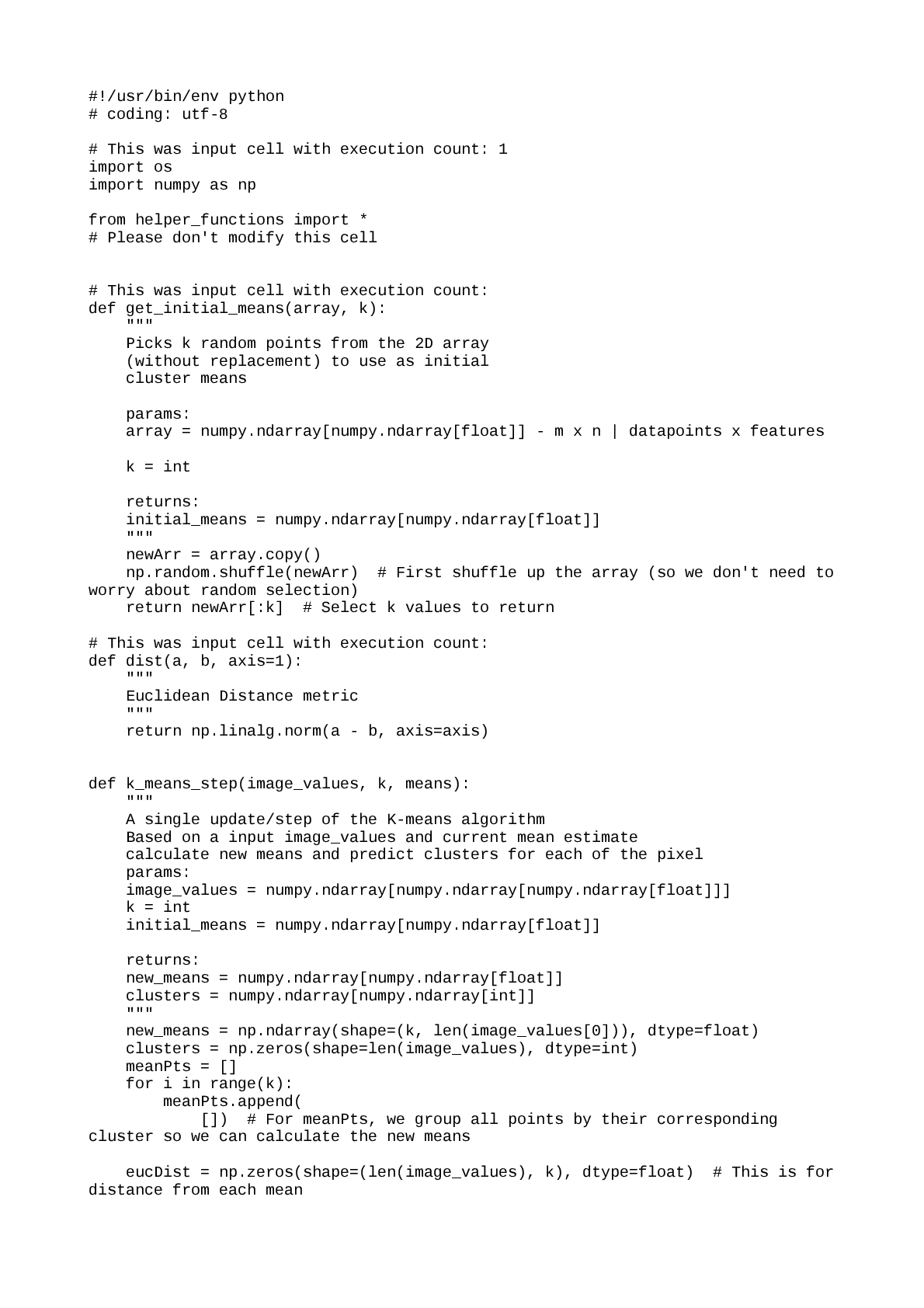
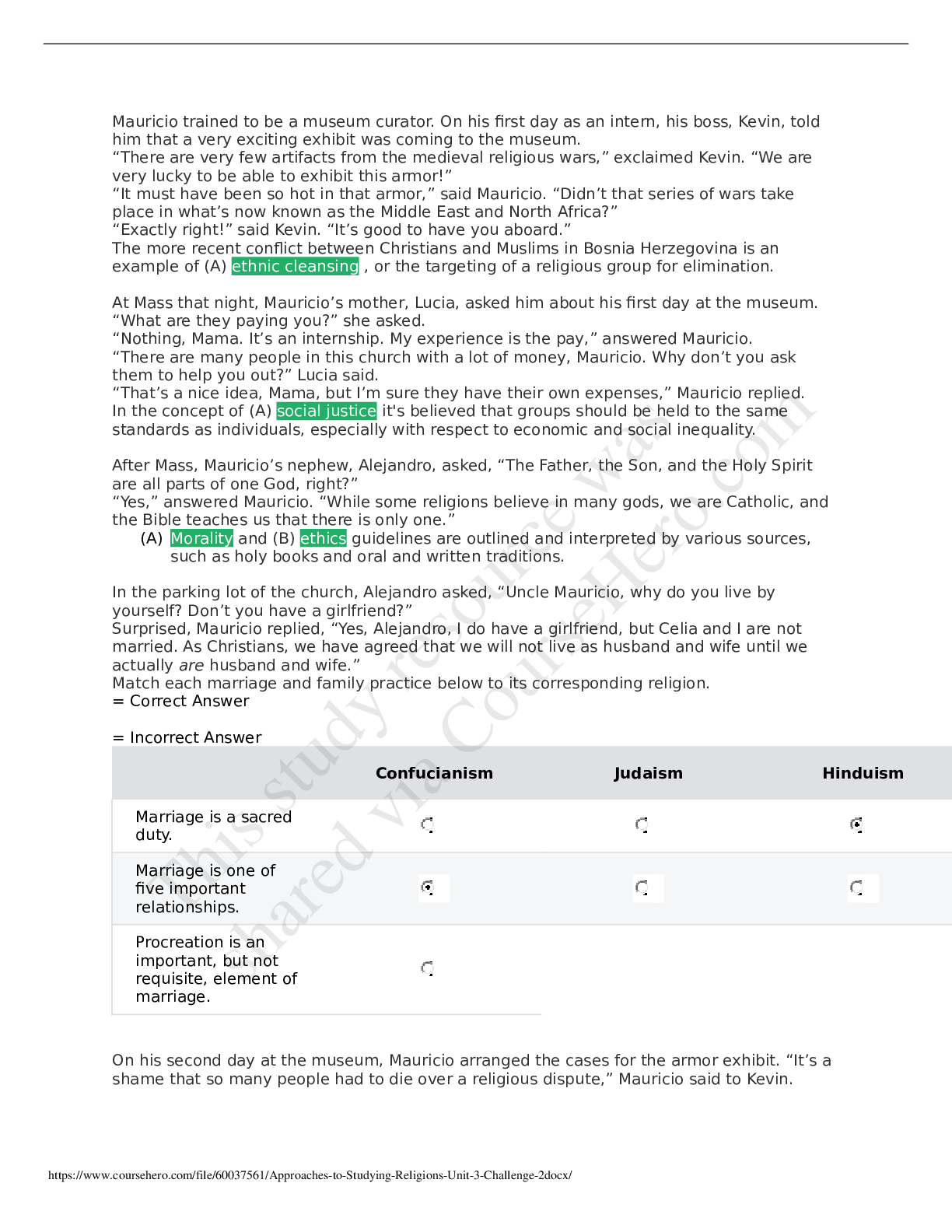
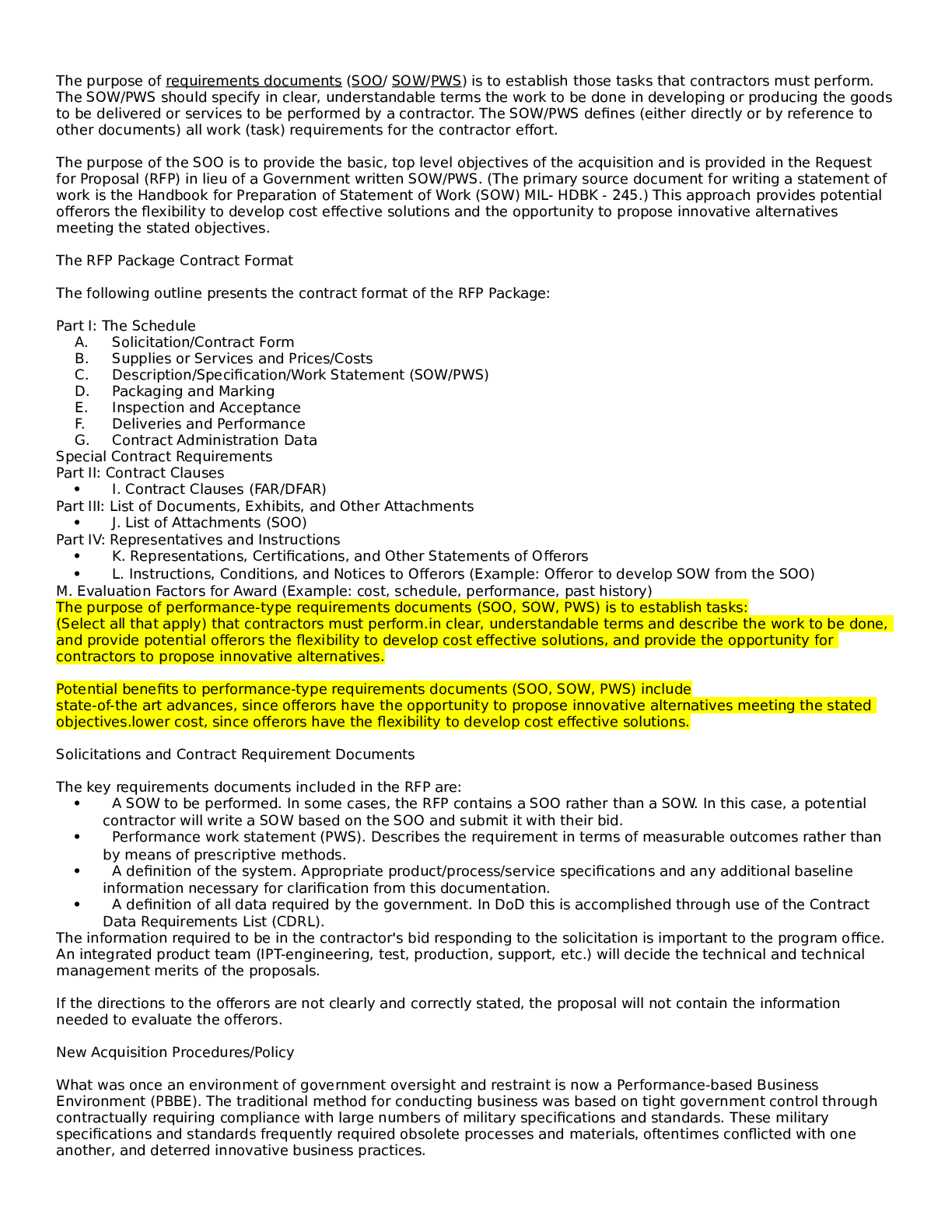
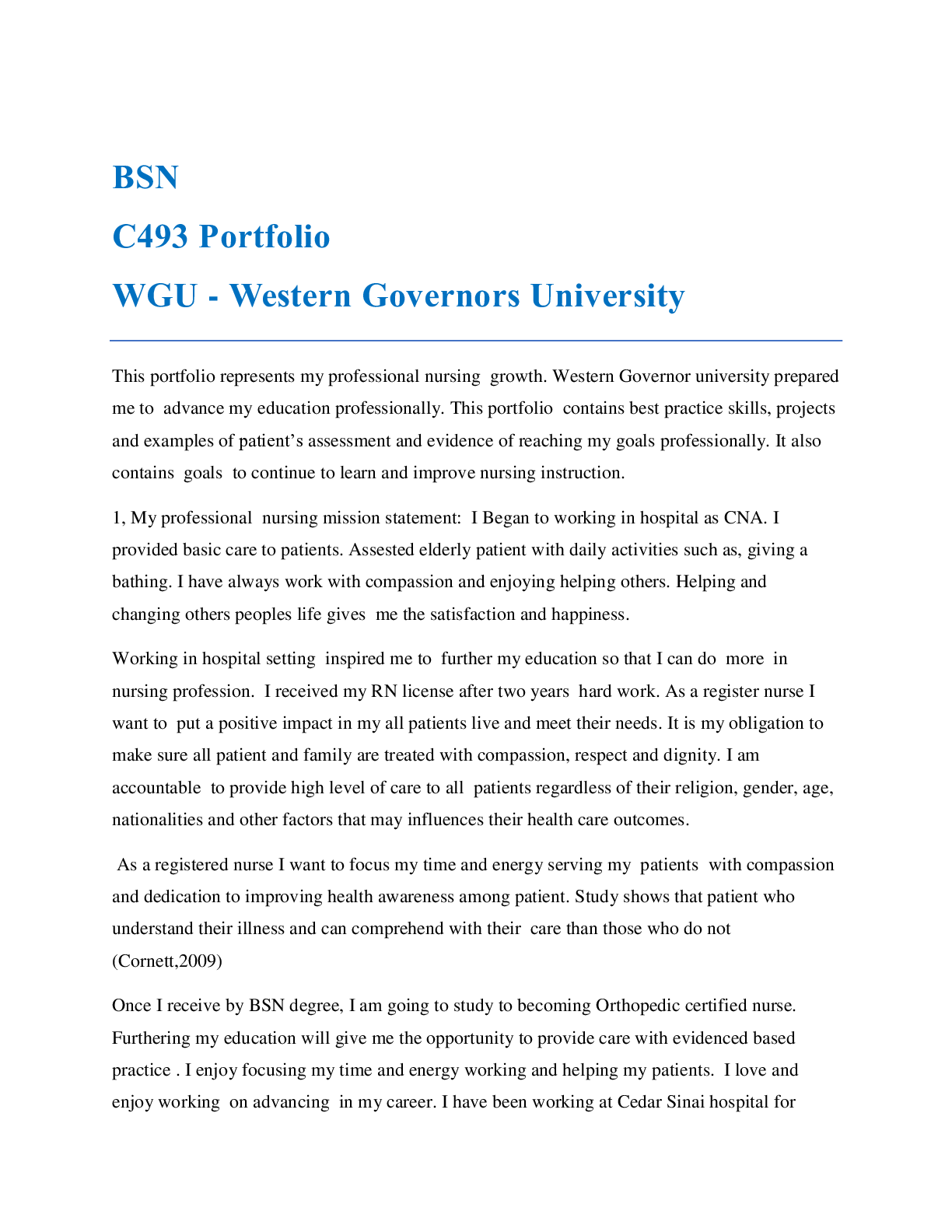
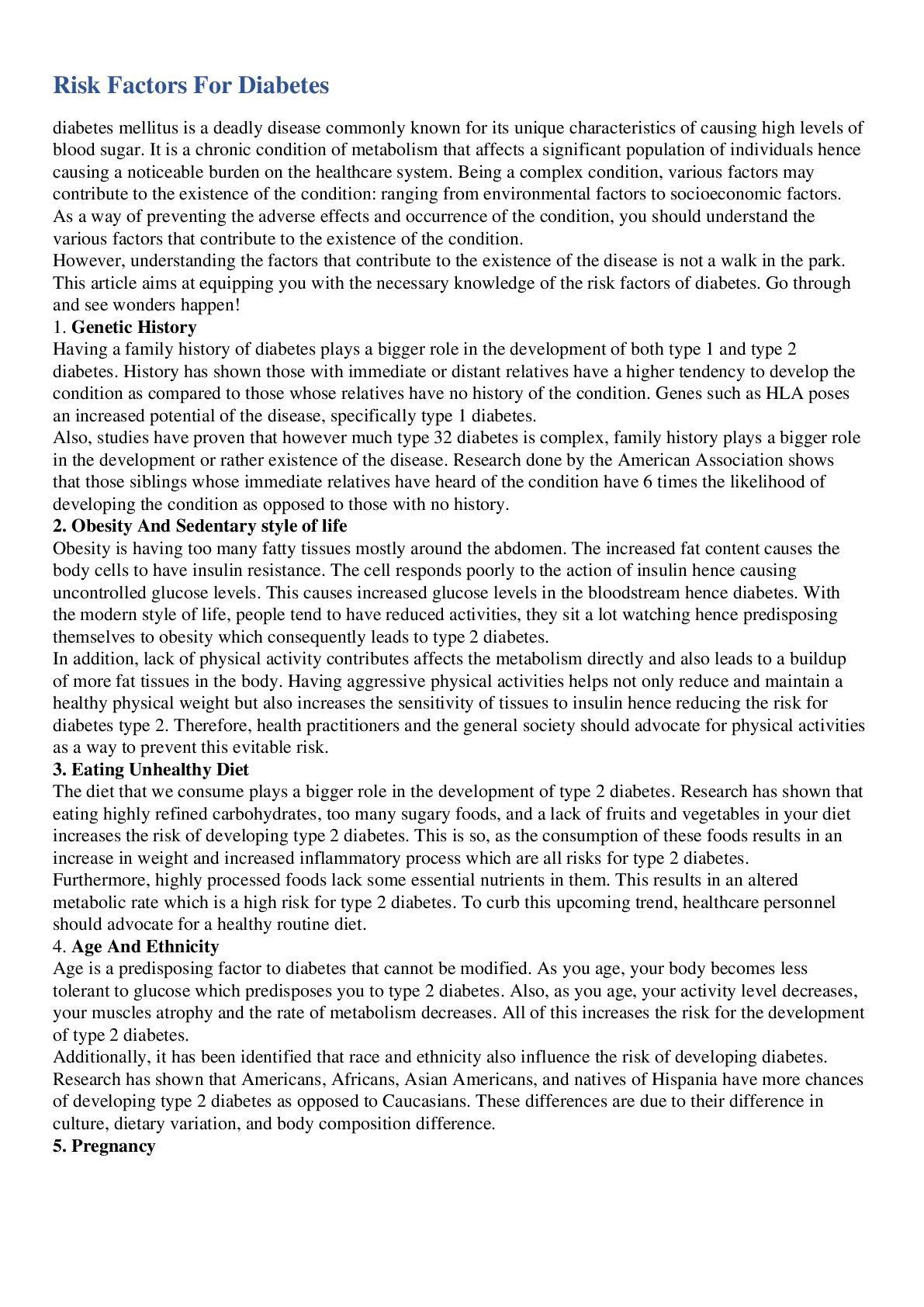
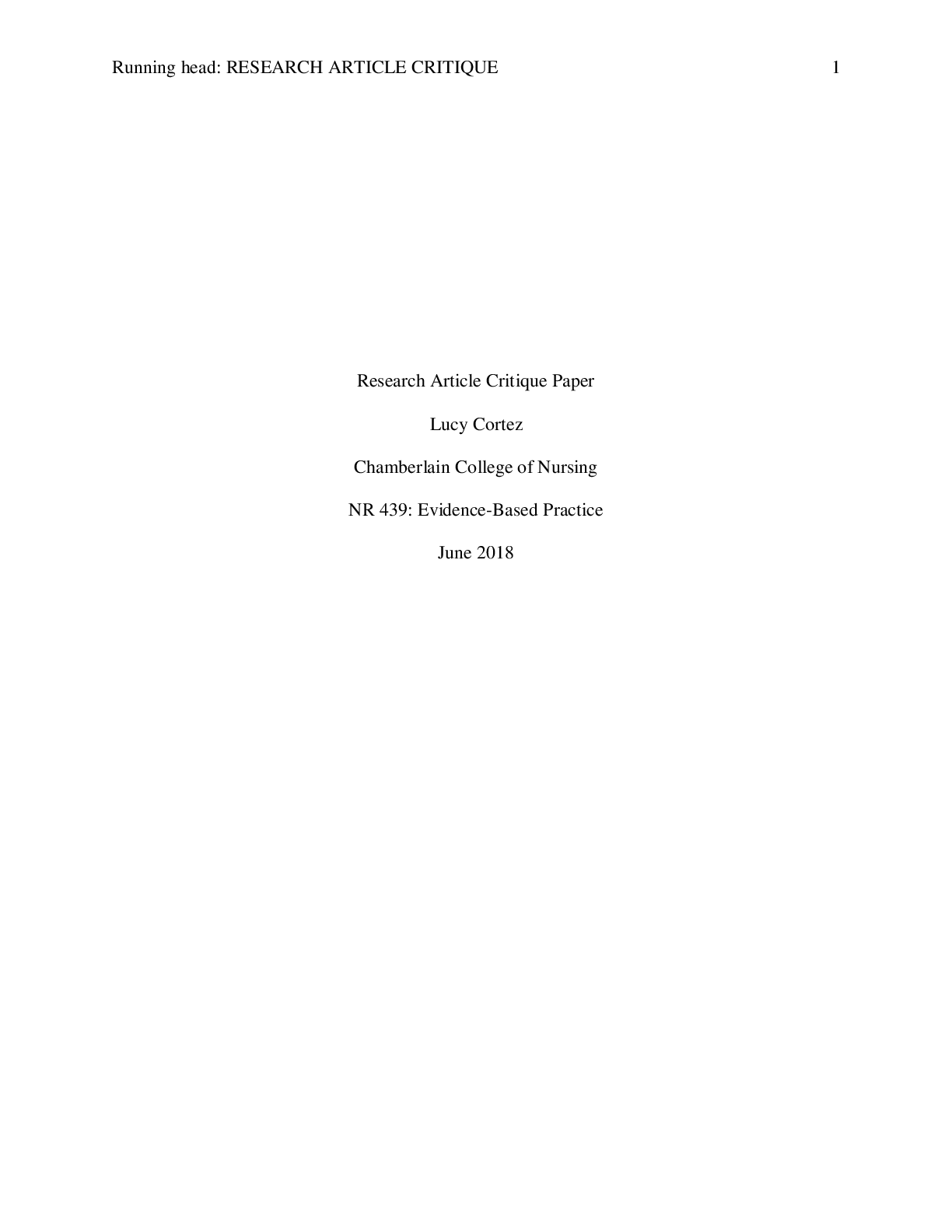
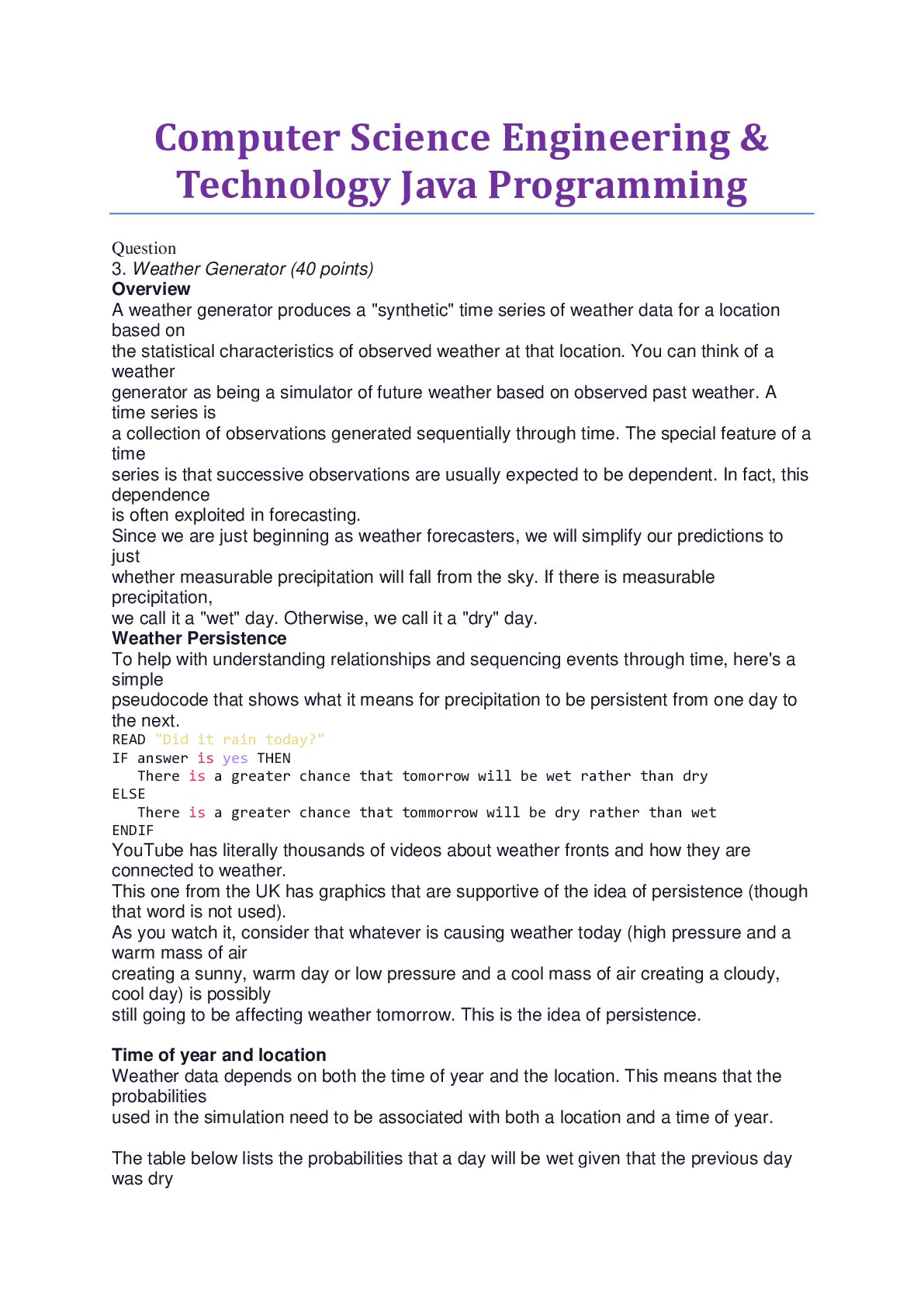
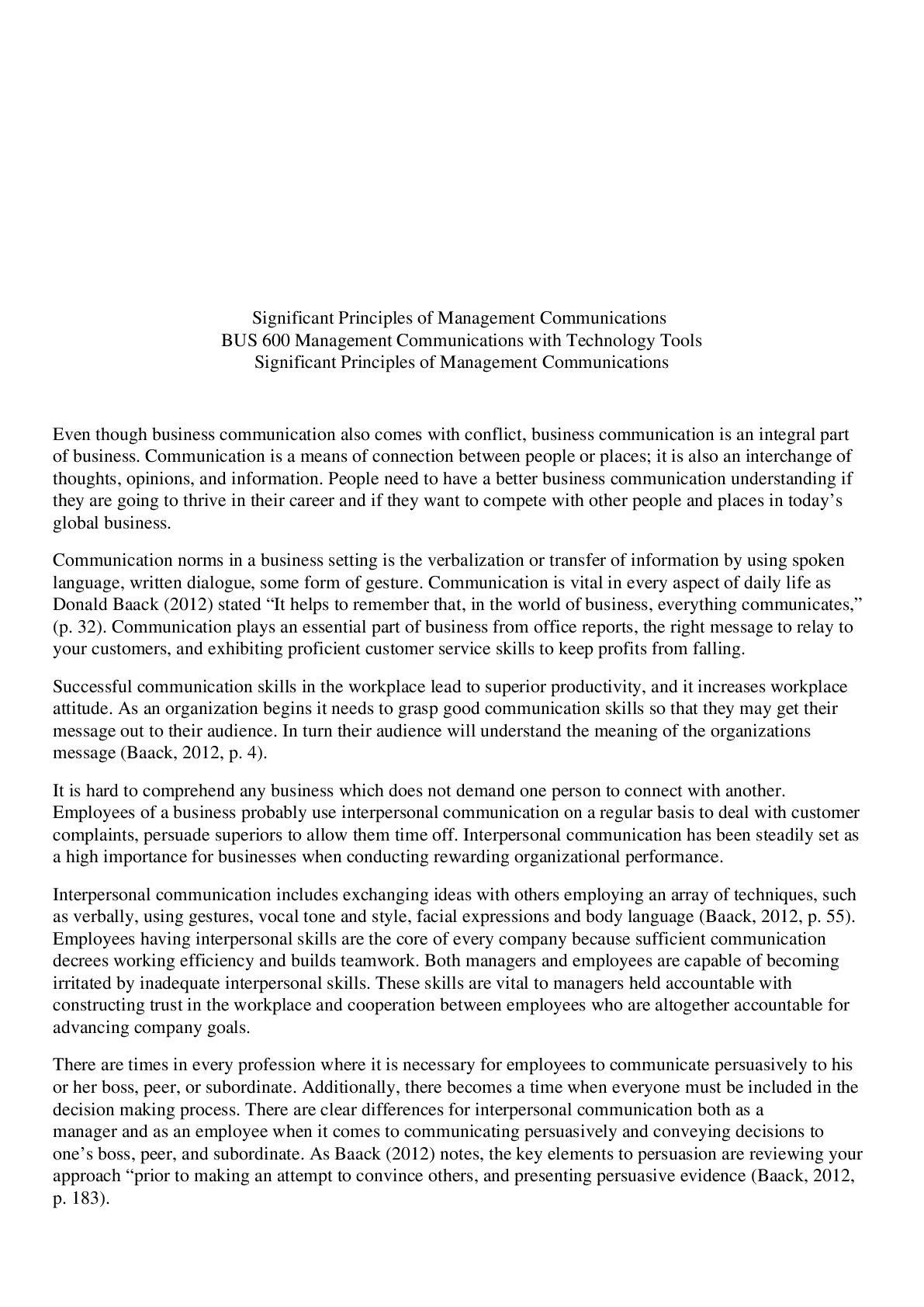
Interdisciplinary Paper.png)


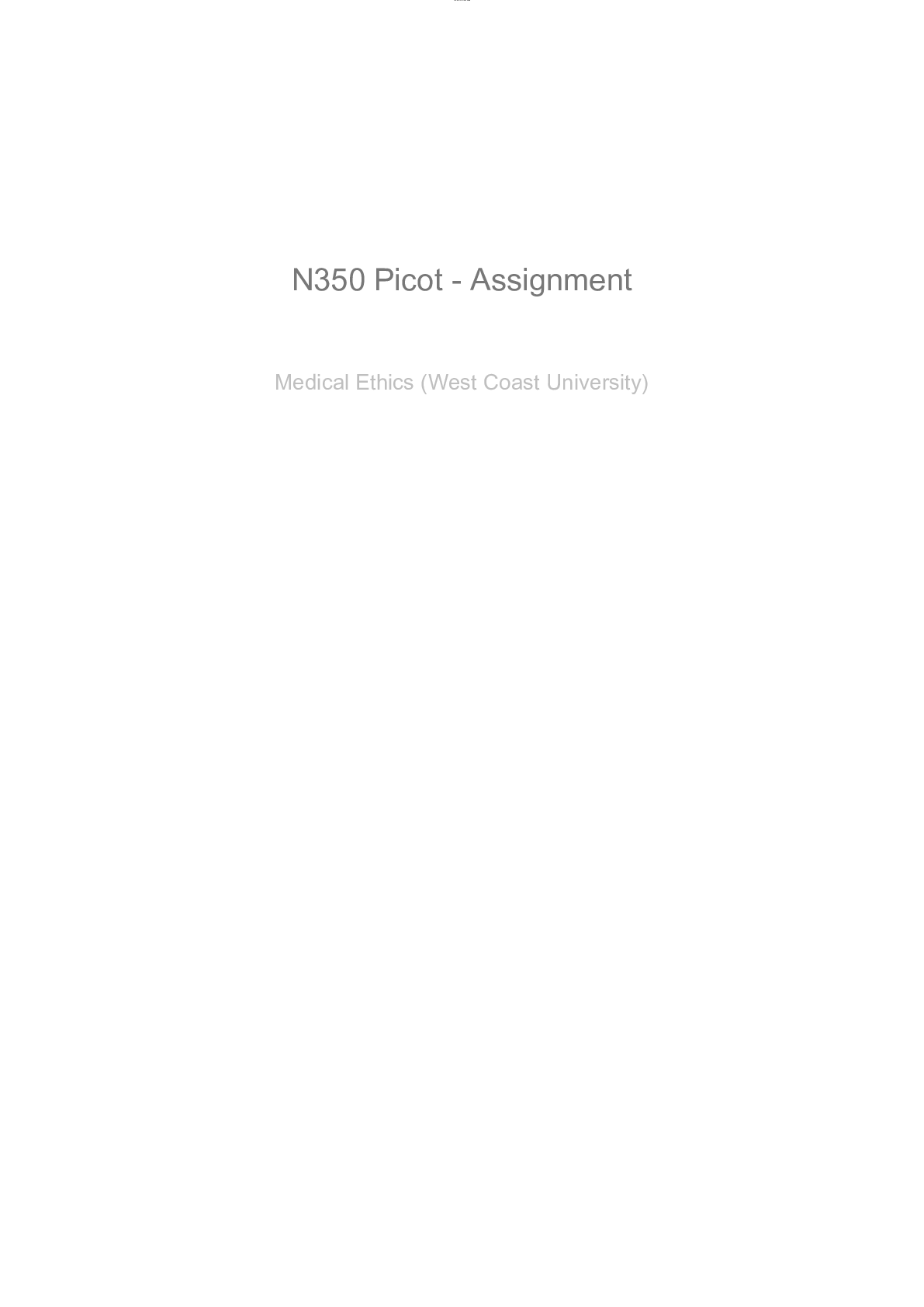
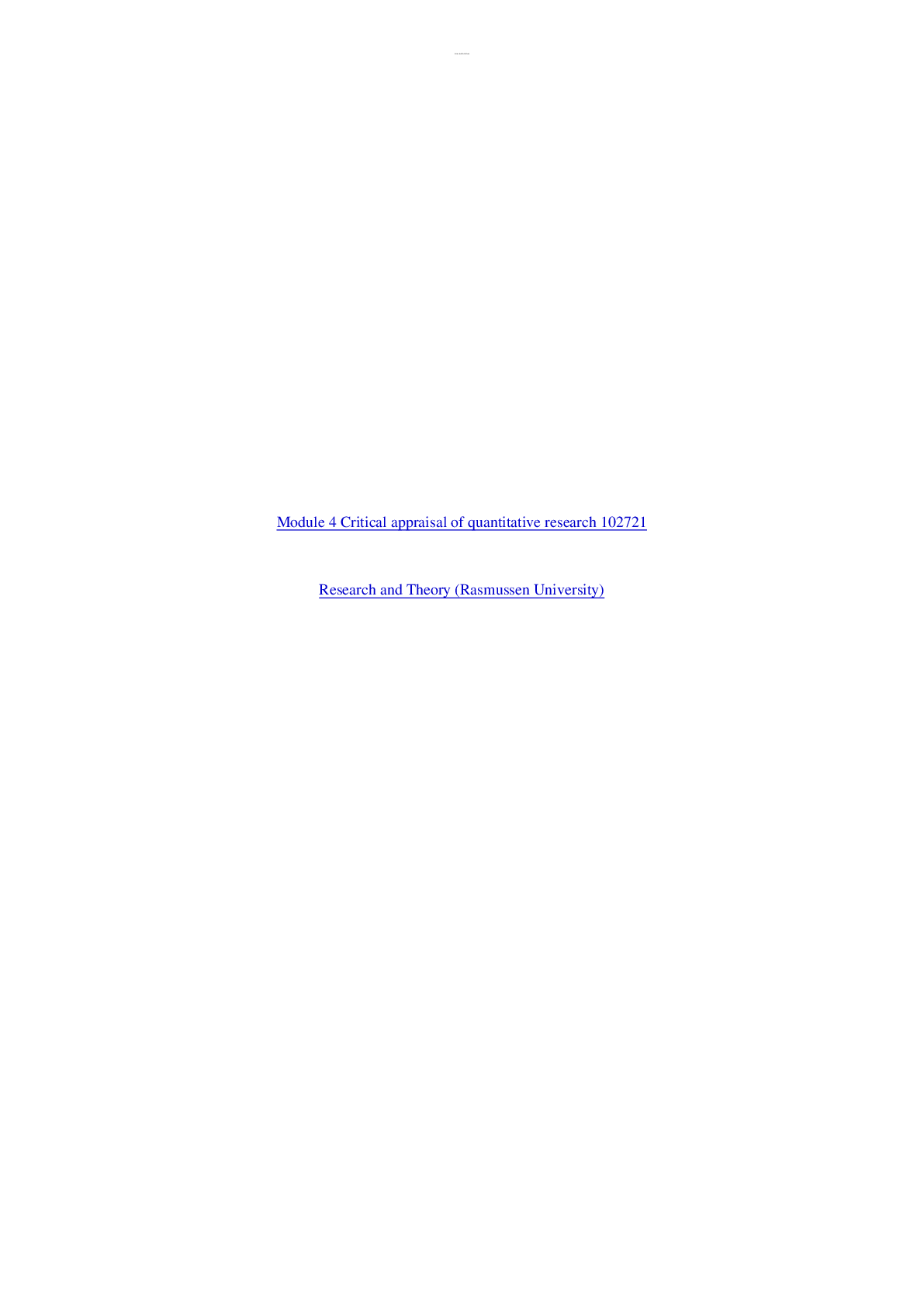

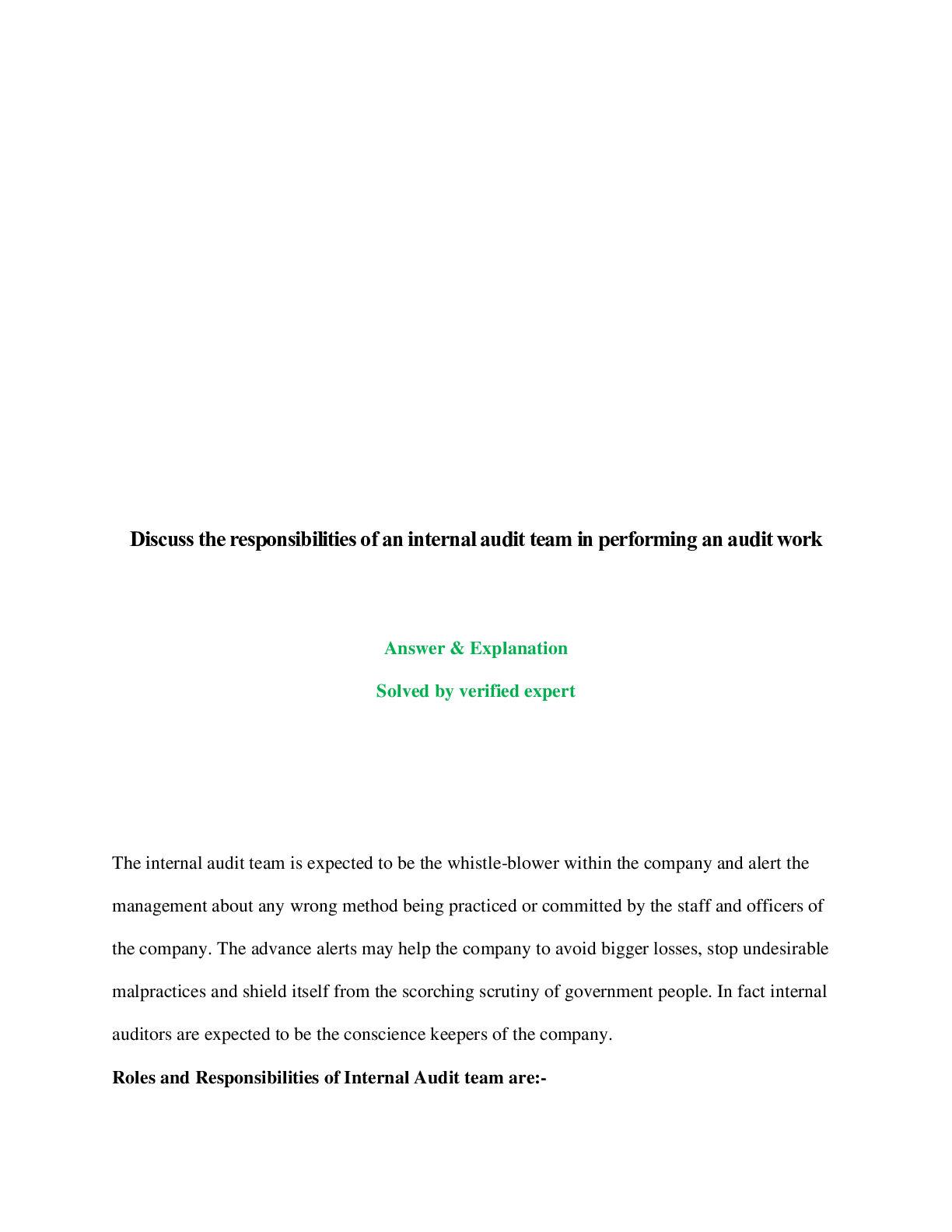



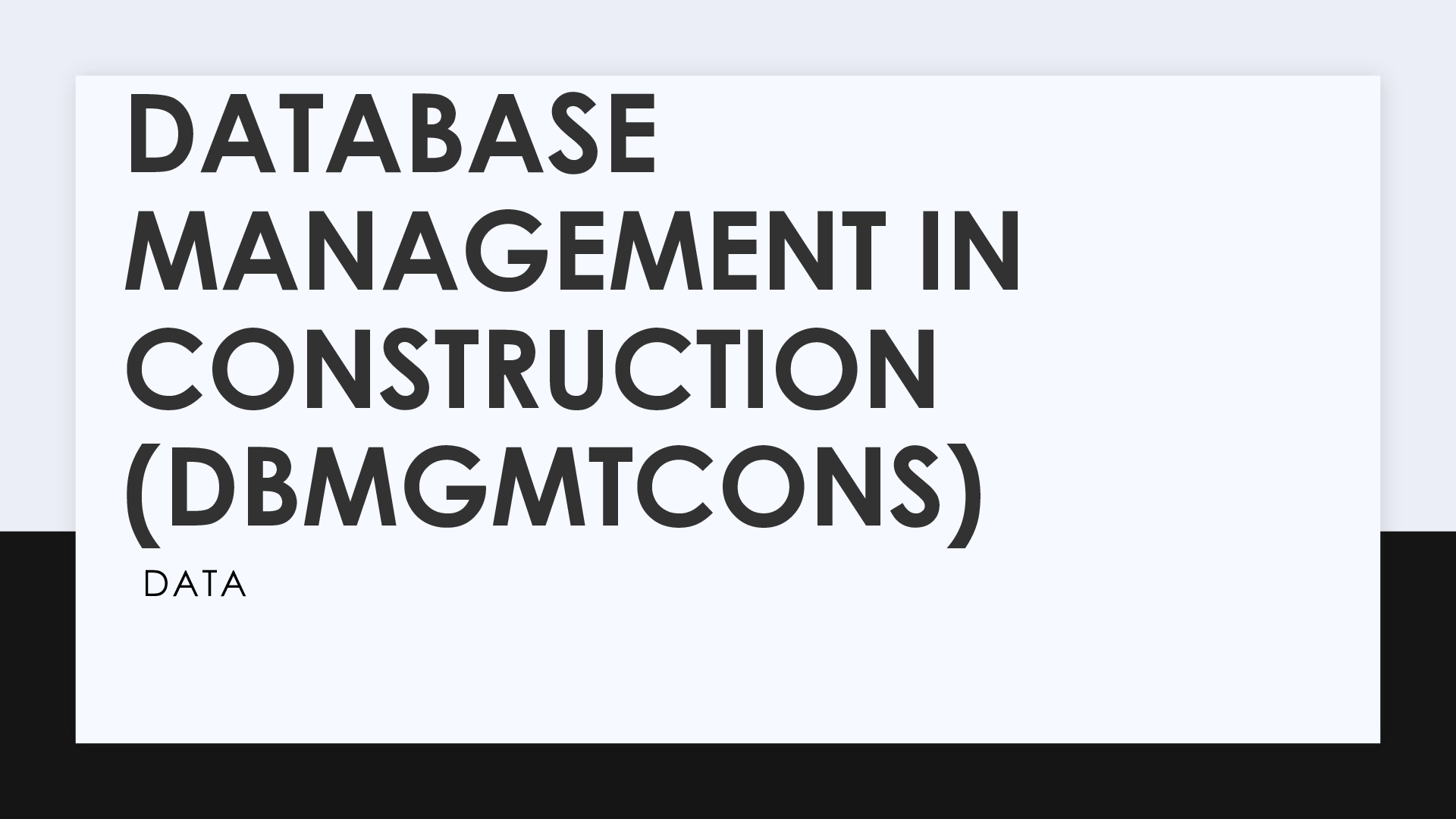
dfdfefe.png)

